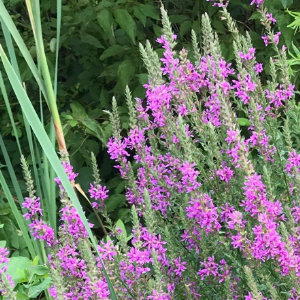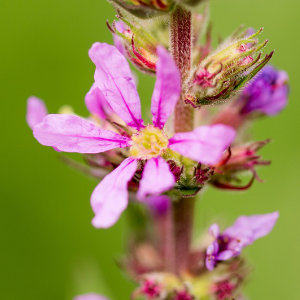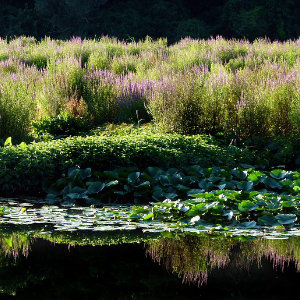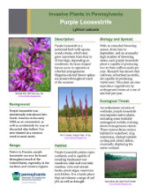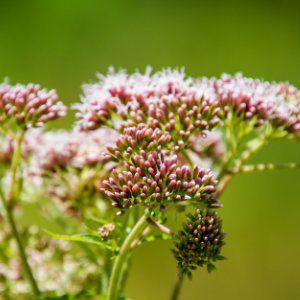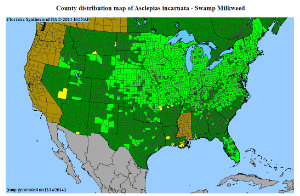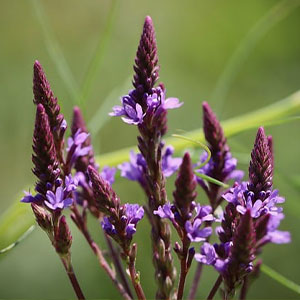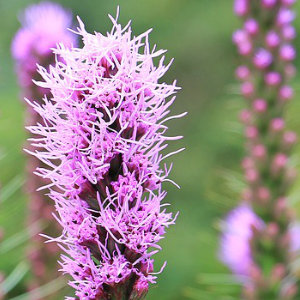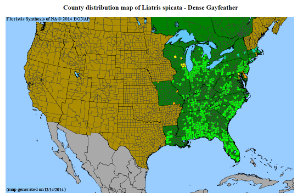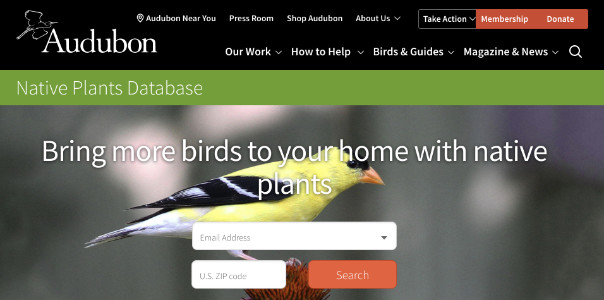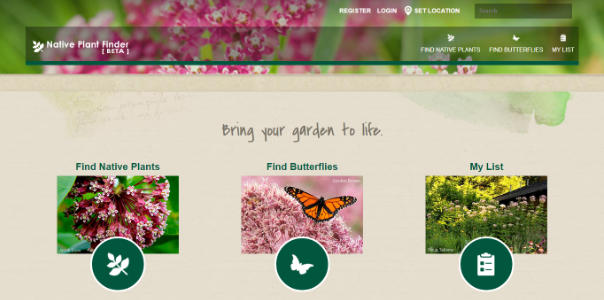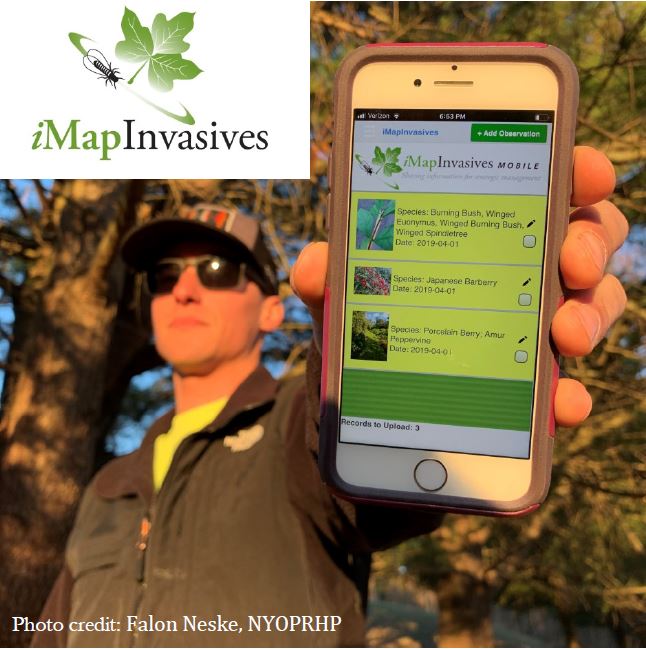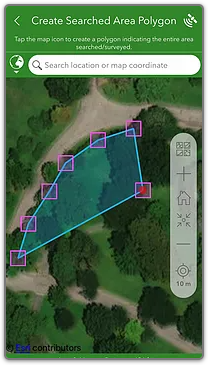Purple Loosestrife
Gardening with purple loosestrife (Lythrum salicaria) was a common practice in the past because of this plant’s attractive and long-lasting flowers. However, because of the threat it poses to wetlands and streamside habitats, finding a native alternative for gardening purposes is recommended. Additionally, the sale of purple loosestrife is banned in Pennsylvania due to its status as a Class B noxious weed.
- Credit: Ed Hawkey, Master Watershed Stewards, iMapInvasives Presence #1062314
- Purple Loosestrife closeup
- Purple Loosestrife infestation
Identification
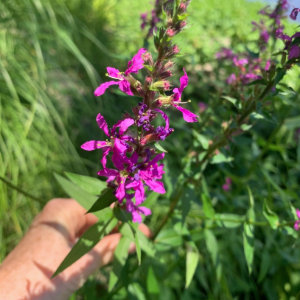
Credit: Mary Walsh
Purple loosestrife is a perennial plant that blooms from July to September and produces flowers which are magenta or purple in color. Each flower contains 5-7 petals on tall spikes. The stems of purple loosestrife are squared and typically have four distinct sides, though sometimes (rarely) the plant can have 5-6 sides. It forms pairs of simple, smooth-edged leaves that attach to the stem which are opposite from one another. Purple loosestrife typically grows 2-6 feet in height, although it can sometimes grow to be nine feet tall.
Purple loosestrife may be confused with several native plants that have purple flowers including:
- Fireweed (Chamerion angustifolium)
- Blazing star (Liatris spicata)
- Purple-fringed orchid (Platanthera psycodes)
Additional information on how to identify purple loosestrife can be found online.
Ecological Threat
Purple loosestrife grows on lake edges and in stream corridors, wetlands, and roadsides. Densely growing, it may degrade habitat for wetland-nesting birds, amphibians, and turtles. This fast-spreading plant outcompetes important native species, and its extensive root system constrains fine sediments and alters the water table in wetlands.
Lancaster County Weed Control Authority: Purple Loosestrife – Credit: LNKTV City
Control and Removal
If purple loosestrife is present on your property, consider removal and management options. The following resources provide valuable information and tips.
Invasive Species Spotlight: Purple Loosestrife – Credit: Pennsylvania DCNR
Other management tips can be found at:
Plant Native Alternatives
*This list is not comprehensive, but rather provides a sampling of species available for purchase from retailers located in Pennsylvania and/or surrounding states. All native plant distribution maps (below) are provided by the Biota of North America Program.
- Swamp milkweed
Swamp Milkweed (Asclepias incarnata)
Swamp milkweed is easy to grow in medium to wet soils and enjoys being areas that receive full sun. Plants have deep taproots and are best left undisturbed once established.
Blue Vervain (Verbena hastata)
Blue vervain is best planted in areas that receive full sun and in soils that are medium to wet. Plants may self-seed in gardens in optimum growing conditions. Note: Blue vervain can be short-lived.
- Blazing Star
Blazing Star (Liatris spicata)
Blazing star grows well in average soils that receive full sun and are well-drained; however, it can be used in rain gardens and does perform well in moist soils compared to other species of Liatris.
Learn More and Take Action
Why are Native Plants Important?
Learn more about the importance of planting native plants by reviewing the following resources. And remember, planting even one native plant on your property is a tremendous benefit to wildlife and the environment!
Doug Tallamy Explains, “Why Native Plants?”
Credit: Catherine Zimmerman
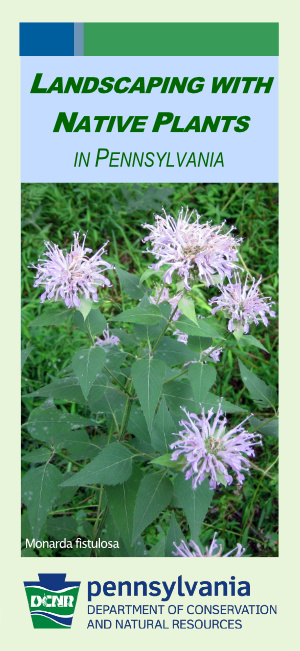
Landscaping with Native Plants in Pennsylvania
Credit: PA Department of Conservation and Natural Resources
Professor Doug Tallamy on Sustainable Landscaping
Credit: University of Delaware
Discover Native Plants.
Learn what plants are native to your area by using the National Wildlife Federation’s Native Plant Finder or the Audubon’s Native Plants Database. Both programs are easy to use - just type in your zip code and a list of native plants is provided to you.
Record Invasive Species Findings with iMapInvasives.
If you find invasive plants and animals in natural areas such as parks, forests, and meadows, please report them to iMapInvasives, an online tool used by natural resource professionals and citizen scientists to record locations of invasive species The iMapInvasives program is useful in understanding species distributions statewide and is used by land managers to prioritize locations to conduct treatment efforts. In Pennsylvania, the iMapInvasives program is administered by the Western Pennsylvania Conservancy and the Pennsylvania Natural Heritage Program and is financially supported by the Great Lakes Restoration Initiative. At the national level, iMapInvasives is administered by NatureServe.
A free registered user account is needed in order to contribute and view data in iMapInvasives. Register here.
How to create a presence record in iMapInvasives online (video)
Connect with Our Experts
Please direct any questions or comments regarding this species profile to Amy Jewitt, Invasive Species Coordinator, or Mary Walsh, Aquatic Zoology Coordinator.

